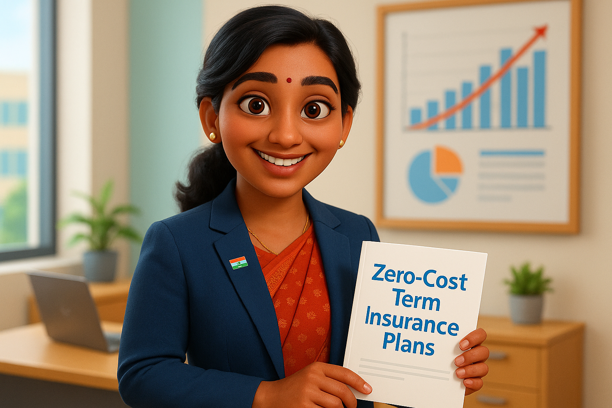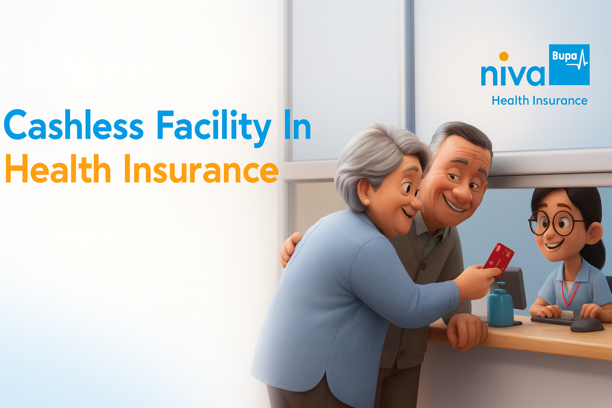Retail Health Insurance - In India
The Story of Health Insurance in India
In 1972, the Government of India nationalised the insurance sector. From then on, only four public sector companies – New India Assurance, United India Insurance, Oriental Insurance, and National Insurance – provided health insurance.
For almost 30 years, these were the only choices people had.
Then came a big change. In 2001, the government opened the doors for private companies. This brought in competition, innovation, and better options for customers.
Today, India has 30+ health insurers – a mix of government companies, private insurers, standalone health specialists, and new-age digital-first brands – offering everything from basic medical cover to advanced, custom-designed plans.
Standard Benefits Commonly Available in Today’s Health Insurance Plans
(Available across HDFC ERGO, ICICI Lombard, Niva Bupa, Aditya Birla Health, and other leading insurers)
Core Coverage Features
🔹 In-Patient Hospitalisation (IPD): Complete coverage for hospitalisation beyond 24 hours, including room rent, ICU, doctors’ fees, medicines, and surgeries.
🔹 Day Care Procedures: Protection for advanced treatments requiring less than 24 hours of hospitalisation (e.g., cataract, dialysis, chemotherapy).
🔹 Modern & Advanced Treatments: Coverage for robotic surgeries, stem cell therapy (as per policy terms), and minimally invasive procedures.
🔹 Pre-Hospitalisation Expenses: Consultation, diagnostics, and medicines up to 30–60 days before admission.
🔹 Post-Hospitalisation Expenses: Treatment-related costs up to 60–180 days after discharge (varies by insurer).
🔹 AYUSH Treatment: In-patient care under Ayurveda, Yoga, Unani, Siddha, and Homeopathy at recognised centres.
🔹 Ambulance Services: Road ambulance coverage, with some plans extending to air ambulance for emergencies.
🔹 Organ Donor Expenses: Medical and surgical expenses for organ donors during transplant (excluding post-complication care).
🔹 Domiciliary Hospitalisation: Doctor-prescribed home treatment when hospitalisation is not possible.
🔹 Cumulative / No-Claim Bonus: Annual sum insured enhancement (50%–100%) for every claim-free year.
🔹 Restoration / Reinstatement Benefit: Automatic reactivation of coverage if the insured sum is exhausted.
🔹 Bariatric Surgery: Expenses for medically necessary weight-loss surgeries (subject to terms and waiting period
🔹 Wellness & Preventive Benefits: Annual health check-ups, teleconsultations, rewards for fitness, and chronic care programs.
Distinctive Benefits by Leading Insurers
🔹 HDFC ERGO
• Unlimited Restoration of Sum Insured (select plans).
• No Room Rent Limit on premium variants.
• Home Healthcare Cover for doctor-supervised treatments at home.
• Daily Cash Benefit for choosing shared accommodation.
🔹 ICICI Lombard
• Maternity & Newborn Cover (post waiting period).
• Critical Illness Add-ons (9–34 illnesses).
• Worldwide Emergency Cover for overseas emergencies.
• Wellness Rewards redeemable for healthcare benefits.
🔹 Niva Bupa (Max Bupa)
• ReAssure Benefit: Unlimited reinstatement of Sum Insured.
• Booster Benefit: Sum insured multiplies up to 5X with claim-free years.
• LiveHealthy Rewards Program (premium discounts for healthy living).
• Second Medical Opinion for critical illnesses.
🔹 Aditya Birla Health.
• HealthReturns: Up to 100% premium back as wellness rewards.
• Chronic Care Management for lifestyle diseases like diabetes & hypertension.
• International Emergency Assistance, including air ambulance support.
• Mental Wellness Programs with counselling & stress management.
✅ Quick Insights.
• Common Coverage: All insurers provide the 13 standard benefits.
• Key Differentiators:
🔹 HDFC ERGO & Niva Bupa → Focus on unlimited restoration & no room rent limits.
🔹 ICICI Lombard → Strong edge in maternity cover & global emergency benefits.
🔹 Aditya Birla → Unique with wellness-linked premium rewards & chronic care support.
When selecting a health insurance plan, the premium is just the tip of the iceberg. The real value lies in the policy’s terms and fine print—details that can significantly impact claim settlement, out-of-pocket costs, and overall coverage. Here's a comprehensive guide to the most critical factors to assess before making a decision:
1.🏥 Room Rent Limit
• Why it matters: Room rent capping restricts your hospital room choices and may trigger proportionate deductions during claims.
• What to look for: Choose policies with no room rent restrictions – commonly found in higher-tier plans from HDFC ERGO and Niva Bupa.
2. 🕒 Pre-existing Disease (PED) Waiting Period
• Typical waiting period: 2 to 4 years.
• Pro tip: Some plans (e.g., Aditya Birla, ICICI Lombard) offer reduced waiting periods for an additional premium—ideal for those with existing health conditions.
3. 💸 Co-payment Clause
• What it means: Co-pay requires you to pay a portion (10–20%) of each claim.
• Best choice: Opt for plans with “No Co-pay” clauses to avoid unexpected financial stress—offered in premium plans by Niva Bupa and HDFC ERGO.
4. 🧤 Consumables Cover
• Why it matters: Medical expenses often include non-medical items like gloves, PPE kits, and syringes—usually not covered in older plans.
• Go for: Upgraded plans from HDFC ERGO, ICICI Lombard, and Aditya Birla that include consumables.
5. 🩺 Day Care Procedures
• Must-have: Coverage for 500+ day-care procedures (e.g., cataract, chemotherapy, dialysis) without 24-hour hospitalisation.
• Top picks: Niva Bupa and HDFC ERGO offer some of the most comprehensive lists.
6.🏠 Domiciliary Hospitalisation
• Importance: Crucial for scenarios where home treatment is necessary due to hospital bed unavailability.
• Checklist: Ensure this feature is clearly included in your policy.
7.🚑 Ambulance Coverage
• Standard range: ₹2,000–₹10,000 for road ambulance; ₹2–5 lakh for air ambulance.
• Look for: Plans from Niva Bupa, HDFC ERGO, and Aditya Birla offering both types in higher variants.
8.🫀 Organ Donor Expenses
• What to check: The policy should cover donor’s surgery and hospitalisation costs.
• Note: Most insurers offer this, but limits and conditions vary.
9.🔎 Annual Health Check-ups
• Why it's valuable: Supports preventive care, early diagnosis, and helps track tax deductions under Section 80D.
• Best options:
• Aditya Birla & Niva Bupa: Included from Day 1.
• HDFC ERGO & ICICI Lombard: Available after 1 year.
10.📈 No-Claim Bonus (NCB) / Sum Insured Booster
• Standard: 10% increase in Sum Insured (SI) per claim-free year.
• Enhanced offerings:
• Niva Bupa (Booster Benefit): Up to 5X SI increase.
• Aditya Birla (HealthReturns™ + Super NCB): Up to 150% SI.
• HDFC ERGO: Up to 100% SI.
• ICICI Lombard: Up to 50% SI.
✅ Final Checklist: What a Strong Policy Looks Like
Before purchasing, ensure your health insurance includes:
• ❌ No room rent cap
• ⏱️ Short PED waiting period
• 🚫 No co-pay
• 🧾 Consumables coverage
• 📋 500+ day care procedures
• 🏠 Domiciliary hospitalisation
• 🚑 Ambulance (road + air) cover
• 🫀 Organ donor expense cover
• 🩺 Annual health check-up
• 📈 Generous No-Claim Bonus or SI booster
These are the real differentiators that impact your experience at claim time, not just your premium.
Over the past five years, India’s health insurance landscape has evolved from basic hospitalisation coverage to comprehensive health solutions. Today’s policies—especially from leaders like HDFC ERGO, ICICI Lombard, Niva Bupa, and Aditya Birla Health—combine financial protection, preventive care, and wellness benefits that match global standards.
For individuals, families, or corporate buyers, the challenge is not just buying a policy—but choosing the right one with the right features.
🌟 Core Protections Every Modern Plan Must Offer
• Hospitalisation Coverage: Ensure no room rent capping to allow treatment in any hospital room of your choice.
• Day-Care & Advanced Procedures: Coverage for robotic surgeries, chemotherapy, dialysis, and more—without 24-hour admission.
• Pre- & Post-Hospitalisation: Expenses like tests, doctor visits, and medicines before/after hospital stay should be included.
• AYUSH Treatments: Ayurveda, Homeopathy, Unani, and other alternative treatments are now standard inclusions.
• Organ Donor Cover: A robust plan should cover both donor and recipient expenses in transplant procedures.
🚑 Beyond Hospitalisation – What Defines a Strong Plan
1. Emergency Support
• Road Ambulance: Standard inclusion across insurers.
• Air Ambulance: Available in premium variants; essential for intercity emergencies.
2. Restoration & Bonus Benefits
• Sum Insured Restoration: Auto-refill of your sum insured once it’s exhausted.
• No-Claim Bonus (NCB): Traditional 10% boosts are now replaced with up to 500% in plans like Niva Bupa ReAssure 2.0.
3. Consumables Coverage
• Items like PPE kits, gloves, syringes, etc., are now included in upgraded plans from HDFC ERGO and ICICI Lombard.
4. Annual Health Check-ups & Wellness
• Day 1 check-ups offered by Niva Bupa and Aditya Birla to promote early detection.
• Wellness apps track fitness habits and offer premium discounts—a futuristic and preventive approach.
👨👩👧👦 Lifestyle & Family-Focused Features
• Maternity & Newborn Cover: Available after 2–4 years waiting; newborns can be added from Day 1 post-delivery.
• Chronic Disease Riders: Add-ons now cover diabetes, asthma, hypertension, and obesity with shorter waiting periods.
• Wellness Programs: From step tracking to dietary coaching, policies now promote holistic health, not just reimbursements.
⚖️ What You Must Check Before Buying
• Room Rent Limit: Always opt for no cap to avoid treatment limitations and proportionate deductions.
• Pre-Existing Disease (PED) Waiting: Look for policies offering 2 years instead of 3–4 years.
• Co-payment Clauses: Avoid plans with co-pay unless absolutely necessary—it reduces your payout burden at claim time.
• Sub-limits: Scrutinize treatment-specific limits (e.g., cataract, joint replacements).
• Claim Settlement Track Record: Go beyond branding—speed and ease of claim resolution matter more.
💡 Add-On Covers That Boost Value (Optional Extras)
• Critical Illness Cover: Lump-sum payout for major conditions like cancer, stroke, or heart attack.
• Fast-Track PED Cover: Reduces waiting time for pre-existing diseases via additional premium.
• Bonus Enhancers / Power Boosters: Increase sum insured by 2X to 5X over claim-free years.
• Air Ambulance Upgrade: Enables faster, life-saving transfers between cities.
• Personal Accident Cover: Offers financial protection in case of disability or accidental death.
🌍 Market Leaders You Can Trust
• Niva Bupa: A game-changer with its ReAssure 2.0 plan—5X sum insured booster, Day 1 check-ups, wellness rewards, and global treatment access.
• HDFC ERGO: Known for strong hospital tie-ups, responsive claims service, and modern features like consumables and digital tools.
• ICICI Lombard: A digital-first player with comprehensive family floaters and broad international coverage.
• Aditya Birla Health: Wellness-focused with reward-linked discounts and a strong health engagement platform.
✅ Expert Suggestion
When comparing policies, don’t let premium be your deciding factor. Instead, focus on the actual value at claim time. Evaluate:
• Waiting Periods: The shorter, the better.
• Restoration & Bonus: Enhances protection at no extra cost during claims.
• Flexibility: No room rent or co-pay restrictions ensure peace of mind.
• Wellness Benefits: Active health engagement means fewer claims and better long-term health.
• Service Quality: Fast claim settlement, seamless digital access, and hospital network strength are critical.
💡 Pro Tip: Paying a slightly higher premium for a feature-rich, high-quality policy can potentially save you lakhs during a medical emergency. It’s not just insurance—it’s smart financial planning.
Pro Tip: Always compare not just the premium, but also waiting periods, sub-limits, optional add-ons, and claim settlement track record before buying.
Role of Insurance Mart
At Insurance Mart, we know that the real test of any health insurance policy comes at the time of claim. That’s why our focus is clear — we prepare you in such a way that when a claim arises, it gets approved in full.
Our process starts before you buy a policy. We guide you to choose a fully loaded cover — with the right benefits, no hidden restrictions, and complete protection. This ensures you’re safe from:
• Claim rejections
• Partial payments
• Unexpected deductions
We carefully check every clause, coverage term, waiting period, and the insurer’s claim settlement ability before recommending a plan.
When a medical emergency strikes, our team stands by your side like family — handling hospital admission, paperwork, and communication with the insurance company so that your claim is stress-free, quick, and fully payable.
Because for us, insurance is not just about selling a policy — it’s about ensuring that when you need it most, it delivers 100% without excuses.






























